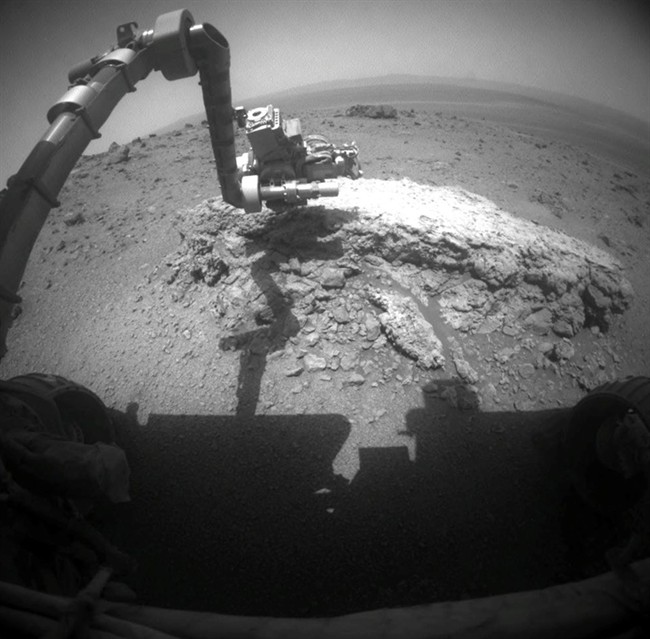TORONTO – Deep underground within the Canadian Shield, scientists are probing for life – yes, life.

Their laboratory is found at the bottom of mine shafts in Timmins, Ont., where pockets of water trapped inside crystalline granite rock have existed for at least a billion years, and may be as ancient as the geology itself – 2.7 billion years old.
That chemical-rich water is seeping, at times even pouring, out of mine bore holes and naturally occurring fissures in the rock 2.4 kilometres below the surface. The water has been captured in what are known as “fractures” within the rocks.
And scientists are keen to find out what that water contains.
“These are the oldest waters that have ever been identified,” said Barbara Sherwood Lollar, a geoscientist at the University of Toronto who is part of a research team that will be looking for life forms in samples of water from the site.
“The Canadian Shield is some of the oldest rocks on Earth. These are billions of years old,” she said Wednesday. “And what we’ve shown is despite that, these fractures are still releasing water that are full of energy that could support life.
“We don’t know yet if there’s life in this, but what we’ve been able to show is it is habitable, meaning (having the) potential to support life because of the energy that’s there.”
It’s not the kind of oxygen-fuelled life forms found on our planet’s surface, but microbes that have evolved in an environment devoid of sunlight and photosynthesis, said Sherwood Lollar, co-author of a research paper published Thursday in the journal Nature.

Get breaking National news
Such life has already been found at 2.7 kilometres underground at a gold mine in South Africa, though the rocks there date in the tens of millions of years, not billions as the Canadian site does.
Many species have also been discovered in and around hydrothermal vents in the inky darkness at the bottom of oceans, where no sunlight ever penetrates. Water from these vents, which is rich in dissolved minerals that would be toxic to surface dwellers, teem with these “chemoautotrophic” bacteria.
The chemical makeup of the water at the Timmins mine is similar to that produced at hydrothermal vents, said Sherwood Lollar. “It’s loaded with dissolved chemistry that actually can support life.”
The water’s chemistry could provide a snapshot of Earth’s atmosphere billions of years ago, when it was transitioning to oxygen, as well as helping scientists better understand the nature of “deep life.”
“It’s really only in my lifetime that we’ve begun to understand that the subsurface of our planet isn’t just a sterile wasteland. When I was in first-year university we still thought that,” she said.
“We’re understanding that there is deep life, that it’s run by a different kind of energy, often. What we’re really interested in now is finding out more about the nature of that kind of life.”
If researchers do turn up life forms in the Canadian water samples, the big question is will they be similar or different from those in South Africa or the ocean’s hydrothermal vents?
“It will help us understand how much of our planet is actually habitable. Are we really just a thin film of life on the surface? Or how prevalent is this subsurface life and what percentage of the world’s overall biomass is down there?”
The answer won’t be known for at least a year, Sherwood Lollar said.
What’s also exciting, she said, is what discovering life deep underground could mean for planets beyond Earth, specifically Mars.
“Much of the Mars crust is similar to our ancient (Canadian Shield). It’s also billions of years old crystalline rock,” with a similar geography to the Timmins site, she said.
That suggests that rocks on Mars could also contain water – and maybe even some kind of life.
“It’s reasonable to think that same process could be going on today in the depths of Mars.”







Comments